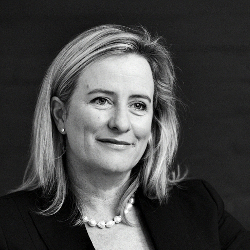The following article is part of a weekly series, where Supply Chain Dive asks five industry influencers to comment on a recent news item, trend or skill set. To read more about the participants, please click here.
I recently had the pleasure of touring the United States, looking for the next big ideas for supply chain management.
A few months ago, during a trip to the University of Arkansas, I was able to witness first-hand an innovation lab where students were working on company-sponsored projects. While there, I also heard a Walmart executive outline how they went about changing their procedures. Later, I had the pleasure of attending CSCMP Edge in Atlanta — where I saw dozens of new technologies — and Procurious' Big Ideas Sumimt in Chicago, where I was asked to "think the unthinkable."
Throughout these trips, I was able to see all sorts of different types of new ideas. So many, in fact, I came to wonder not what innovation was, but how to achieve it. Seeking to learn more, I asked our five thought leaders to help me answer a related question:
What drives supply chain innovation?

Abe EshkenaziCEO, APICS
While no single factor will drive innovation, supply chain leaders cannot ignore the Internet of Things (IoT) and its potential to revolutionize supply chain. By integrating physical and digital operational components, the IoT creates opportunities for more effective and efficient supply chain processes.
Deploying advanced sensor networks and data-collection platforms alone, however, will not innovate business practices. Organizations need savvy operators, supervisors and leaders with the knowledge to successfully manage IoT technology.
Innovative supply chain performance demands technology, but it starts with people.

Cathy Morrow RobersonFounder and Head Analyst, Logistics Trends & Insights
In my experience, the customer tends to drive supply chain innovation. By nature, supply chains evolve based on external forces as well as internal factors, typically to improve efficiencies and reduce costs. As a result, customers’ supply chains have to adapt to these changes in order to remain competitive.
The definition of innovation can vary from one company to the next as well — modal shifts or combinations of transport modes, value-added services such as a 3PL performing light manufacturing or the use of a cloud-based TMS can all be considered innovations and they are usually based on a customer need.
Some of the more popular examples that have caught the attention of the market and journalists alike are those surrounding technology and startups. The plethora of digital freight brokers, freight forwarders and others are examples of supply chain innovations that have materialized to attempt to answer the need for improved efficiencies and reduced costs. While the jury is out on their success, these online rate comparison, booking and tracking portals have attracted much attention, investment and market rethink. But most importantly, they have given the customer another option and tool to manage freight movements on their terms.
Drones are another example of innovation. While some industry folks chuckle over the thought of drones making deliveries, they are indeed doing just that particular within areas hit by natural disasters and in remote locations. As an example, UPS has partnered with a couple of drone providers in Africa to delivery blood and other needed medical goods to remote areas of Rwanda. Another example is the Chinese e-commerce provider, JD.com, who is using drones to deliver to rural China locations.
What about Amazon and e-commerce as driving supply chain innovation? In my opinion, Amazon is addressing the needs of its unique and expanding ecosystem of customers which includes the consumer, the FBA customer and others. As the “World’s most customer-centric company”, Amazon is meeting their customer needs by taking control of their supply chain, end-to-end, and adapting in ways that the likes of UPS, FedEx, DHL and others have not experienced before. Five-to-seven day delivery is no longer the norm, now 2-day delivery is expected thanks to Amazon Prime. Amazon’s customer expect fast delivery and as a result, other logistics providers and retailers are working to catch up.

Jon SlangerupPresident and CEO, American Global Logistics
Supply chains are complex, interdependent networks of people, capital and infrastructure which deliver trillions of dollars each year in global trade, providing the material goods that people everywhere need or want. Global commerce is a direct reflection – and often an accurate predictor – of economic growth or decline on local, national and regional scales. Supply chains enable global commerce which, by its very nature, is highly competitive and value-driven.
What continues to drive innovation is the competition for satisfying consumer demand. That demand puts supply chains under continual pressure to lower costs and improve performance – which in turn creates the need and opportunity for continual innovation. Managers who are the most effective at finding ways to optimize their supply chains rely on innovation to deliver greater market share and profitability.
In my experiences, supply chain optimization creates competitive advantage by prioritizing innovation in five key areas:
- Visibility – tracking and reporting end-to-end goods movement through every hand-off point.
- Agility – reacting and responding to changing physical and market conditions.
- Productivity – achieving cost reductions while increasing velocity of goods movement.
- Reliability – delivering as promised.
- Profitability – achieving commercial sustainability.

Karin BursaExecutive Vice President, Logility
Supply chain innovation is driven by the need to differentiate.
To attract and retain customers, companies must innovate across product development, process improvement, and technology enablement. It is critical for companies to turn information into action through advanced analytics, evaluate multiple scenarios to identify the optimal course of action and have confidence in the decision-making.
Supply chains are no longer a cost of doing business, it has become a platform for growth enabling companies to open new markets and channels to reach new customers. To be successful, companies must innovate to differentiate.

Tania SearyFounding Chairman, Procurious
If necessity is the mother of invention, need is the father of innovation.
Today's supply chain leaders have to respond to so many concurrent forces – consumers’ demand for differentiation, corporate pressure to reduce costs, customers' requirement for transparency, suppliers' need for real time data and government insistence for supply chain purity.
This cacophony of, sometimes competing, voices is compelling supply chains to innovate. As leaders, we need to commit. Dive in. Take on the challenge.














